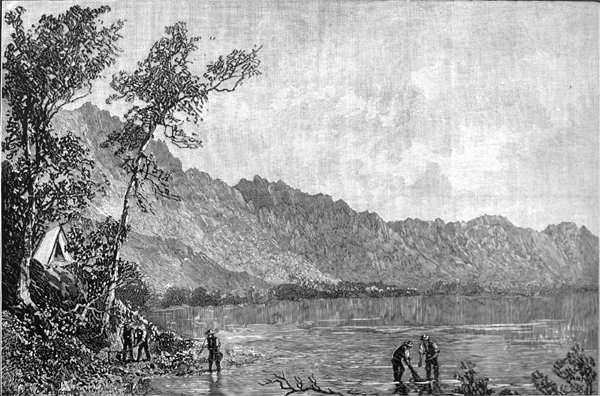 |
 |
|
Lake Pedder
Lake Pedder in south-western Tasmania was a beautiful, isolated lake formed about 10,000 years ago during the last Ice Age. The shallow, nine square kilometre lake was ringed on its eastern shore by a white quartzite beach and sand dunes. It lay in a large, flat valley, the source of the meandering Serpentine River, surrounded by spectacular mountain ranges. Until the 1960s only the avid bushwalker had ventured into this rugged wilderness, but this was to change. The original Lake Pedder was destroyed in 1972. The protection provided by its National Park status, granted in 1955, was revoked by the Tasmanian government in 1967. It allowed the Hydro-Electric Commission to dam the Gordon River and flood the valleys of the Serpentine and upper Huon Rivers, to create a backup reservoir for the Gordon Dam and Power Station. By the early 1970s, Lake Pedder had become Australia's most controversial piece of water and the bitter environmental debate started Australia's move towards environmental awareness. It was the flooding of Lake Pedder that saw the birth of the United Tasmania Group – the first Green political party in the world. Despite the protests and demonstrations, more than 240 square kilometres of Tasmania's wilderness were drowned and the original lake is now 20 metres underwater. The new, artificially created impoundment was also named Lake Pedder. Even today, there is support for draining the impoundment, which flooded Lake Pedder. Some studies suggest that with rehabilitation work, the lake and its neighbouring creeks and wetlands would be restored and the valley would regain much of its aesthetic value. Further reading: B Brown, Lake Pedder, Hobart, 1986. Lynn Davies |
Copyright 2006, Centre for Tasmanian Historical Studies |
